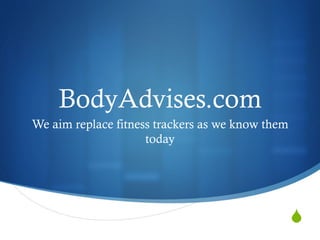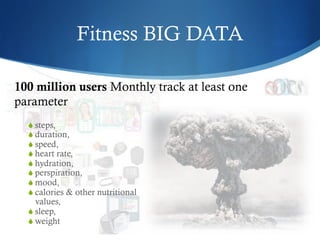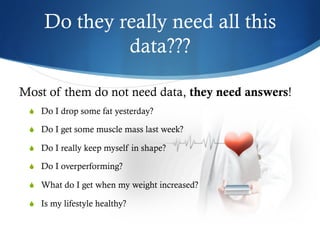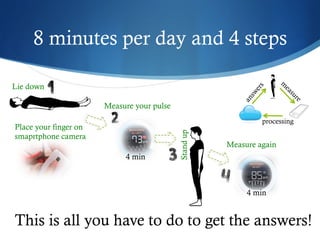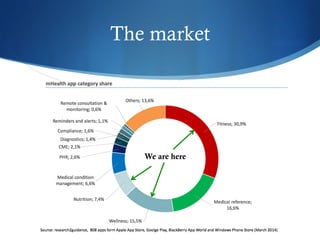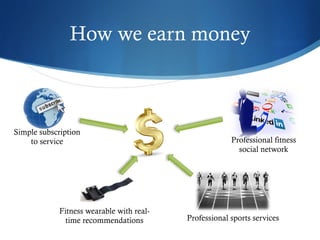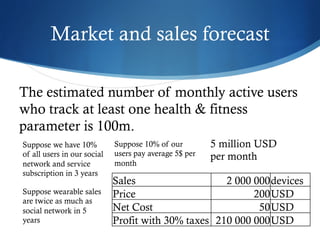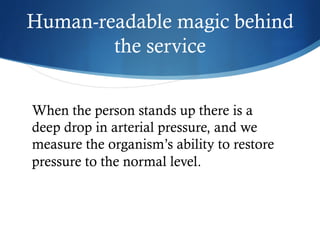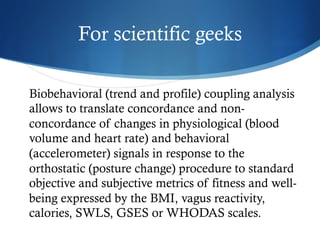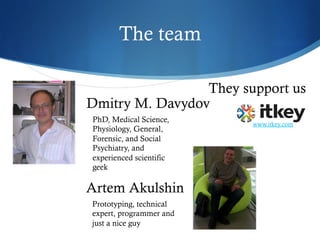Bodyadvises what we do
- 1. Sï BodyAdvises.com We aim replace fitness trackers as we know them today
- 2. Fitness BIG DATA SïâŊsteps, SïâŊduration, SïâŊspeed, SïâŊheart rate, SïâŊhydration, SïâŊperspiration, SïâŊmood, SïâŊcalories & other nutritional values, SïâŊsleep, SïâŊweight 100 million users Monthly track at least one parameter
- 3. Do they really need all this data??? SïâŊ Do I drop some fat yesterday? SïâŊ Do I get some muscle mass last week? SïâŊ Do I really keep myself in shape? SïâŊ Do I overperforming? SïâŊ What do I get when my weight increased? SïâŊ Is my lifestyle healthy? Most of them do not need data, they need answers!
- 4. 8 minutes per day and 4 steps 4 min 4 min This is all you have to do to get the answers! Lie down Measure your pulse Standup Measure again Place your finger on smaprtphone camera processing
- 5. The market We are here
- 6. How we earn money Simple subscription to service Professional fitness social network Fitness wearable with real- time recommendations Professional sports services
- 7. Market and sales forecast The estimated number of monthly active users who track at least one health & fitness parameter is 100m. Suppose we have 10% of all users in our social network and service subscription in 3 years Suppose 10% of our users pay average 5$ per month 5 million USD per month Suppose wearable sales are twice as much as social network in 5 years Sales 2Ėý000Ėý000devices Price 200USD Net Cost 50USD Profit with 30% taxes 210Ėý000Ėý000USD
- 8. Human-readable magic behind the service When the person stands up there is a deep drop in arterial pressure, and we measure the organismâs ability to restore pressure to the normal level.
- 9. For scientific geeks Biobehavioral (trend and profile) coupling analysis allows to translate concordance and non- concordance of changes in physiological (blood volume and heart rate) and behavioral (accelerometer) signals in response to the orthostatic (posture change) procedure to standard objective and subjective metrics of fitness and well- being expressed by the BMI, vagus reactivity, calories, SWLS, GSES or WHODAS scales.
- 10. The team Artem Akulshin Prototyping, technical expert, programmer and just a nice guy Dmitry M. Davydov PhD, Medical Science, Physiology, General, Forensic, and Social Psychiatry, and experienced scientific geek They support us www.itkey.com

